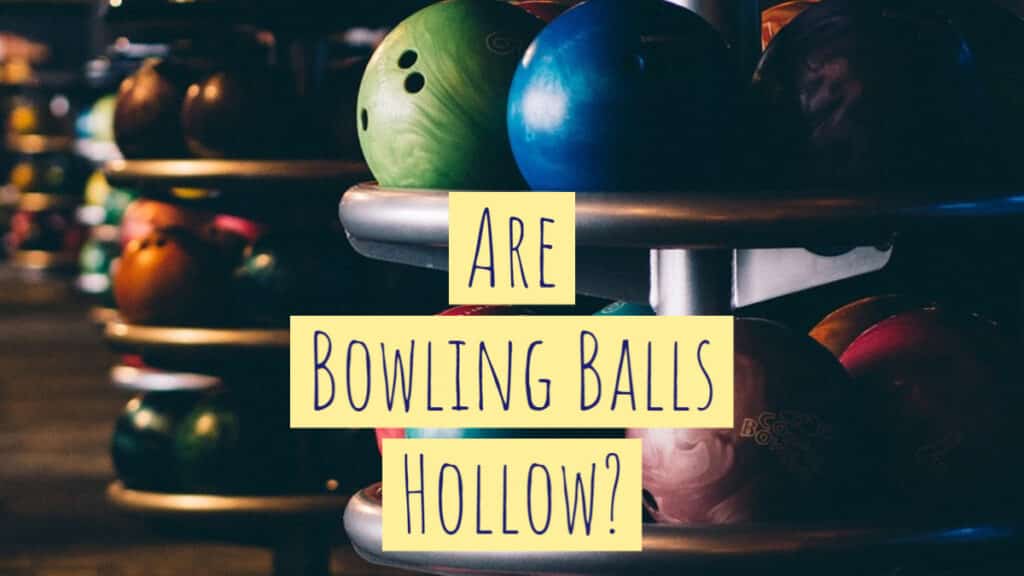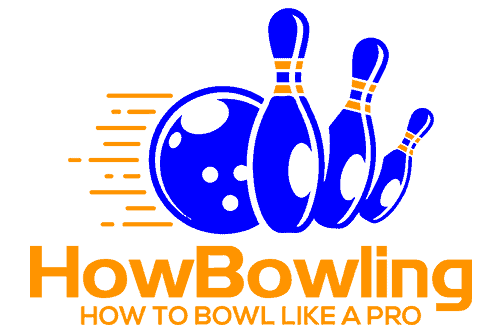As a bowling enthusiast, no matter if you are a beginner or a professional of the game, learning about the basics of bowling and having a vast knowledge of the sport is extremely important. Bowling Balls are the most important part of the bowling sport. Without them, there is no bowling.
You might be wondering, are bowling balls hollow, or do they have filler material? Well, that is precisely the question I am here to answer for you today.
In this article, I am going to talk about the inside of a bowling ball, whether it is hollow or not, and how a bowling ball is made. So, make sure that you read this completely because it will help you increase your knowledge of the bowling sport very much.

Misconception about Bowling Balls
Bowling balls are very dense-looking spheres, but they do not a lot most of the time unless you get customized bowling balls made according to your weight requirements. This is one of the reasons people around the world believe bowling balls to be hollow from the inside.
Along with that, there is also the fact that bowling ball finger holes are quite deep and give the impression that the entirety of the ball must be hollow. But that is nothing but a common misconception. The answer to the question, “Are bowling balls hollow?” is simply, No, they are not hollow. They are solid from the inside out.
What is on the Inside of a Bowling Ball?
Well, if the inside of a bowling ball is not empty, then what is in there? You might be thinking. The inside of a bowling ball contains a core that is made of dense plastic or ceramic material with a weight block placed in the middle.
Every single bowling ball has the same size. The only thing makes the weights of bowling balls different from each other are the filling materials density and the core material.
That is why a kid’s bowling ball is six pounds whereas a full-fledged bowling ball can weigh anywhere from 12 pounds to 16 pounds. You can get your custom bowling ball designed and filled to a weight you are comfortable with, but bowling balls should not weigh more than 16 pounds.
The Process of Bowling Ball Creation
So, what is the entire process of bowling ball creation and manufacturing? This question might be going through your mind right now. Lucky for you, I am going to show you the step-by-step process of the creation of a bowling ball from the inside. Let us look at the process.
Forming the Core
The first step is to form the core of the bowling ball. The bowling ball consists of a core material that is made up of ceramic material, resin, glass microbubbles, and more dense filler materials.
A weight block is first placed at the center of the mold and then the filler material is poured into the core mold. Once all the material is filled into the core, the mold is set aside. The weight block could either be made of steel, wood, or ceramic depending upon the weight of the bowling ball.
The mold will now harden over time and then the core will be formed and ready to be covered with any material from plastic, urethane to reactive resin depending upon the type of bowling ball. It will contain not only the filler material but also the equilibrium maintaining weight block which was placed in the mold before manufacturing began.
Molding the Coverstock
After the core is finished, the outer layer of the bowling ball must be created. To do so, you are going to need to place the bowling ball on a pin and inside the mold of the Coverstock.
Whether it is reactive resin, urethane, plastic, or polyester, the essential materials will be poured over the core up to 1-inch thickness and allowed to harden over time so the bowling ball form could be achieved.
Once, the outer layer, also called the cover material of the bowling ball is perfectly molded, the process of the bowling ball construction is almost done. Except that there is a pinhole in the middle of the bowling ball that needs to be filled.
That is exactly what will be done in the next step. The pinhole will be filled with a plastic dowel which will be cemented into the pinhole, creating the bowling ball shape that we all know and love. But this is not the end of the bowling ball manufacturing process.
Finishing the Bowling Ball
Now the bowling ball will be moved to the finishing station. In this place, the first thing that happens is that the bowling ball is resurfaced, sanded, and polished to achieve the perfect size and even thickness all over the bowling ball and get a good look.
Secondly, the finger holes will be drilled into the bowling ball. If it is a custom ball then custom-sized holes will be added and if it is a regular-sized ball, then house ball standard finger hole sizes will be used.
Lastly, the bowling ball is going to be branded by hand or using an automated branding machine after which the bowling ball will once more finally be polished to get that perfect new bowling ball look.
You are going to find the bowling ball in a bowling pro shop anywhere in the world after this step. From there, you can buy the bowling ball and use it to score incredible strikes and spares and make your game better. That is the entire process of a bowling ball, from creation to finishing to retail and then professional usage.
Conclusion
Bowling ball cores and creation processes have changed quite a lot through the years. But now the two-piece ball is the preferred method of manufacturing to make the ideal bowling balls. I hope you learned a lot from this guide, and you are going to continually increase your knowledge of the bowling sport to become a professional. I hope you have a great time when you are in the bowling alley again!




